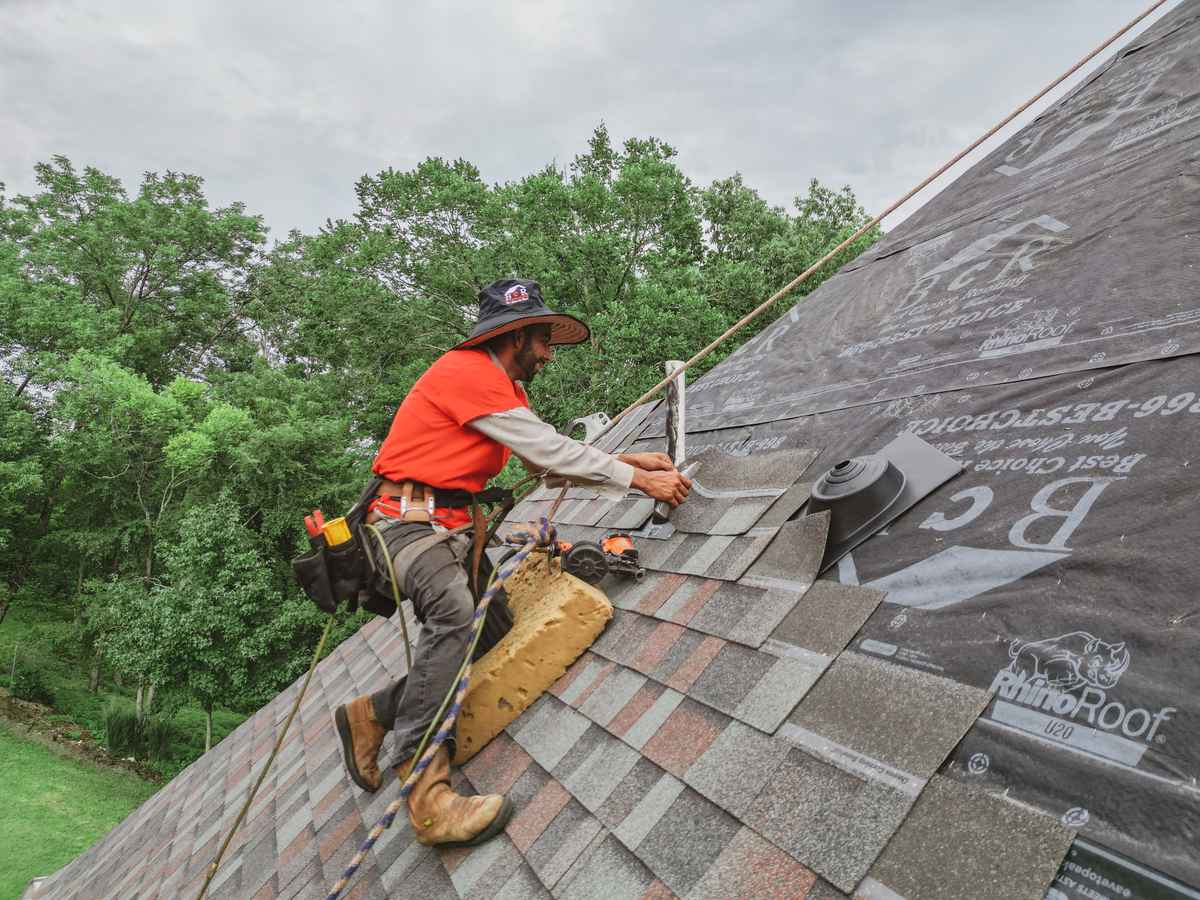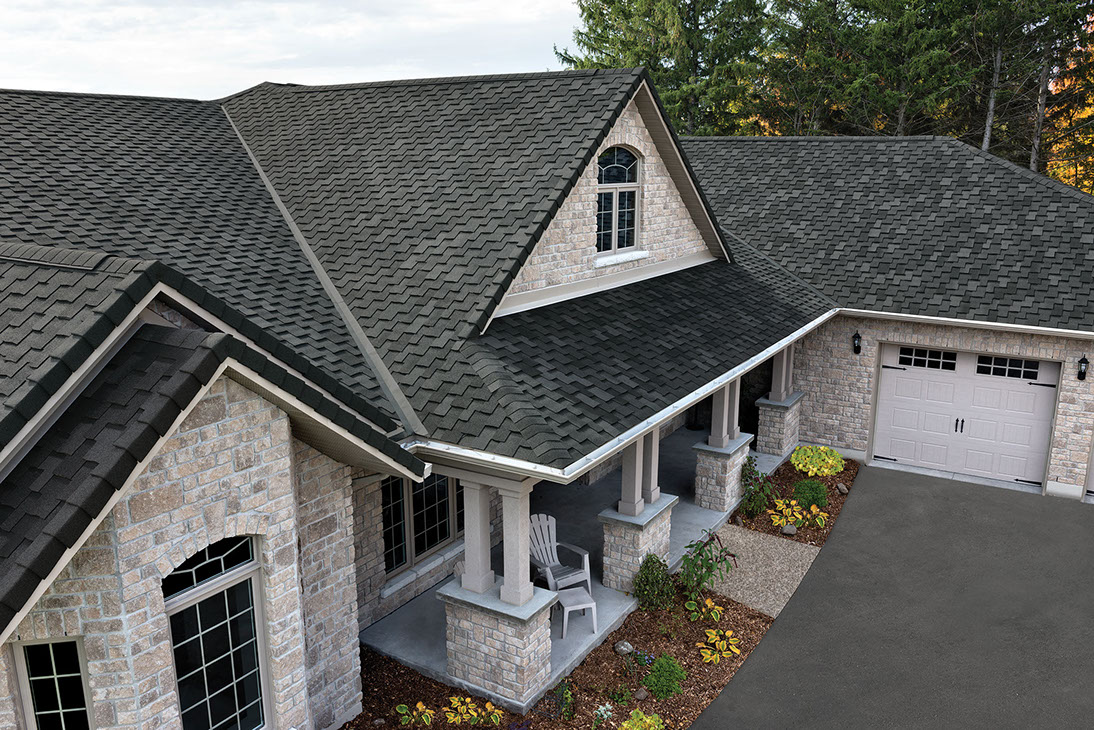A Comprehensive Overview to the Installation Process for Your New Roof
The installation procedure for a new roof system needs mindful consideration of numerous elements. From reviewing the roofing system's architectural integrity to choosing appropriate materials, each step plays a necessary function in making sure a successful end result. Comprehending the subtleties of installment can protect against future concerns and improve resilience. What are the essential actions one must follow to achieve a durable and reputable roof? The response exists in a methodical technique that resolves every critical facet.
Recognizing Different Roofing Products
When picking a roof, recognizing various roof covering materials is necessary for making an informed choice. Various materials offer distinctive benefits and downsides, affecting resilience, price, and looks. Asphalt tiles are prominent for their affordability and ease of installation, making them an usual selection for domestic buildings. Steel roofing, understood for its longevity and resistance to extreme weather condition, interest those looking for durability. Clay and concrete floor tiles offer an unique aesthetic and excellent insulation yet can be larger and extra expensive. Slate roofing, commemorated for its all-natural appeal and exceptional life expectancy, has a tendency to be a costs choice requiring experienced installment. For environmentally-conscious house owners, eco-friendly roof, which integrate greenery, existing lasting advantages. Understanding these materials permits house owners to straighten their option with budget, climate considerations, and individual design choices, eventually guaranteeing a roofing option that meets their requirements effectively.
Analyzing Your Roof covering's Structural Integrity

Reviewing a roof's structural stability is essential for ensuring its long life and safety. This procedure involves checking the roofing system framework for any indications of weak point, determining potential water damage, and determining the lots ability to support numerous roof covering products. Addressing these variables will help preserve the total health and wellness of the roofing system.
Checking Roofing System Structure
Prior to installing a brand-new roof covering system, it is important to thoroughly check the roofing system framework to confirm its architectural integrity. This procedure includes evaluating crucial elements such as rafters, trusses, and the overall framework style. A certified examiner needs to seek signs of wear, warping, or any architectural shortages that can compromise the brand-new roof setup. Additionally, it is important to examine for appropriate lots circulation, making specific that the framework can support the weight of the new materials. Any kind of determined issues should be addressed before proceeding, as they can result in significant troubles down the line. By prioritizing this evaluation, home owners can assure a reliable and resilient roof that will endure the test of time.
Determining Water Damage
Water damages can greatly affect a roofing system's structural stability, making it crucial to identify any indicators early in the assessment procedure. Homeowners should try to find staining or stains on ceilings and wall surfaces, which might suggest leaks. Drooping locations in the roofing or ceilings suggest collected dampness that might endanger architectural parts. Evaluating the attic is necessary; mold and mildew development and damp insulation are indicators of water breach. In addition, examining the roof surface area for missing roof shingles, fractures, or corrosion on steel elements can disclose potential susceptability to water damage. Routine evaluations can aid in early detection, allowing for timely repairs that maintain the roofing's integrity and stop substantial damages. Addressing these indicators immediately is important for keeping a safe and long lasting roof system.
Reviewing Load Capacity
Reviewing the lots ability of a roof covering is important for assuring its structural honesty and long life. This evaluation includes taking a look at the materials utilized in the roofing's construction, the underlying structure, and the general layout. Aspects such as snow build-up, wind tons, and the weight of roofing products must be taken into consideration to identify whether the framework can sustain extra lots. An architectural designer can offer useful insights, conducting computations based upon regional building codes and environmental problems. Routine assessments and upkeep additionally play an important function in recognizing possible weaknesses. By completely reviewing lots ability, home owners can stop costly damages and make particular that their new roofing system is durable and safe for years to come.
Planning and Readying for Installation
Effective planning and preparation are vital actions before mounting a roof system - roofing pacific mo. This involves reviewing certain roofing requirements and choosing the proper materials that best fit those requirements. A thorough understanding of these aspects can significantly influence the success and longevity of the roof covering project
Examining Your Roof Demands
Exactly how can one guarantee that their roofing job meets both useful and visual requirements? A detailed analysis of roof covering demands is essential. This involves examining the current roof's condition, determining any kind of damages, and figuring out architectural integrity. House owners must consider their environment, as weather condition problems considerably affect roof product options and longevity. In addition, evaluating architectural design and community aesthetics is vital for maintaining residential or commercial property value and charm. Comprehending personal choices and spending go now plan restrictions more help in making notified decisions. Consulting with roofing specialists can supply important understandings and suggestions tailored to details demands. By diligently reviewing these aspects, homeowners can assure their roofing task aligns with their unique demands and improves their residential or commercial property's total appearance.
Choosing the Right Materials
When picking products for a roof job, it is important to think about both functionality and appearances to ensure an effective installation. Homeowners should consider the environment of their area, as specific materials do much better under certain weather. For example, metal roofs supply longevity in locations prone to hefty snowfall, while asphalt roof shingles might be more economical for milder environments. In addition, the design of the home plays a considerable role; materials should enhance the building layout to improve visual charm. Sustainability is an additional element; environmentally friendly choices like solar ceramic tiles or redeemed timber can lower ecological influence. Ultimately, choosing the appropriate products involves stabilizing these elements to protect a lasting and visually enticing roof system.
Safety Preventative Measures During Installment
Guaranteeing safety throughout roof system installment needs thorough attention to detail and adherence to established procedures. Primarily, employees need to put on ideal individual protective tools (PPE), including helmets, handwear covers, and non-slip shoes, to minimize injury dangers. Scaffolding and ladders need to be securely positioned and kept to give secure job surface areas. It is vital to examine the roof structure for weak points or damage prior to beginning job, as this can stop crashes later on.
Additionally, installers must be learnt fall defense approaches, consisting of using harnesses and guardrails. Weather problems likewise play a considerable role; job ought to be held off throughout high winds, rain, or storms. Moreover, all devices and materials should be organized and secured to prevent tripping dangers. By focusing on these safety and security preventative measures, the threat of crashes can be especially lowered, making certain a safer working setting for all associated with the roofing installation process.
Step-by-Step Setup Process
A successful roof installation involves a series of meticulously planned steps that ensure both efficiency and high quality. Originally, the old roofing product have to be gotten rid of, making certain the underlying framework is intact. Next, any kind of needed repairs to the roofing deck are done, strengthening its stability. Following this, a dampness barrier is set up to shield against water infiltration. The selection of roofing product, such as shingles or metal panels, is then set out, beginning from the eaves and proceeding upwards. Each piece is safeguarded meticulously to hold up against weather. Ventilation systems are incorporated to promote air flow and protect against dampness accumulation. Flashing is set up around vents and chimneys to more guard against leakages. Ultimately, the setup is assessed for compliance with regional building ordinance and maker requirements. This extensive method guarantees a trusted and long lasting roof that meets homeowner expectations.
Ending Up Touches and Inspections

When the setup of all parts is full, a detailed inspection follows. This consists of monitoring for correct positioning, safe attachment, and adequate securing of seams. Inspectors also review air flow systems to assure peak air movement and wetness administration.
In addition, any particles or remaining materials from the setup have to be cleared from the roofing system and surrounding area. By thoroughly taking care of these details, homeowners can ensure that their brand-new roof is not just functional however likewise aesthetically appealing, setting the phase for lasting performance and resilience.
Maintenance Tips for Your New Roofing system
While numerous property owners may overlook the significance of normal roofing upkeep, establishing a routine can greatly expand the life-span and performance of a new roof covering system. Normal inspections must be conducted a minimum of two times a year, ideally in springtime and fall, to identify any type of potential issues early. House owners need to check for missing or loosened shingles, signs of wear, and particles accumulation in valleys and rain gutters.
Cleaning the roof surface and gutters is vital to stop water damage and mold growth. Furthermore, cutting looming branches can reduce damage brought on by falling particles. It is also a good idea to keep track of indoor ceilings for indications of leakages or water spots, which might suggest roofing problems.
Engaging a professional for yearly inspections assures that any type of underlying concerns are addressed immediately, protecting the honesty of the roof covering system and offering tranquility of mind for property owners.

Frequently Asked Questions
The length of time Does the Roof Covering Installment Process Typically Take?
The roof setup process typically takes one to three days, depending on the job's dimension and complexity. Factors such as climate problems and the sort of roof covering material can additionally affect the general timeline.
What Permits Are Required for Roof Covering Installment?
The called for licenses for roofing setup typically consist of structure permits, architectural permits, and, in some locations, electrical or plumbing authorizations. Laws may differ based on regional codes, demanding examination with more info here local authorities for particular needs.
Can I Stay At Home During the Installation?
House owners can remain throughout roofing system installment, yet it might be inconvenient due to noise and disruptions. Specialists suggest avoiding of work areas for safety and security and to permit the staff to perform their jobs efficiently.
Will My Insurance Cover the Roof Covering Installation Costs?
Insurance policy protection for roofing installation prices differs based upon specific plans and situations. House owners must consult their insurance supplier to fiberglass shingles figure out qualification for coverage, consisting of aspects like damages intensity and plan specifications concerning roof covering substitute.
What Occurs if It Rains Throughout Installment?
Workers might halt progress to prevent damage to products and assure security if it rainfalls throughout installation. Rain can likewise delay completion, requiring additional time for drying out and potential re-evaluation of the roofing project.
The setup procedure for a new roof covering system needs careful consideration of various factors. When choosing a roof covering system, recognizing various roof products is necessary for making an informed decision. When picking materials for a roof project, it is essential to take into account both performance and aesthetic appeals to ensure an effective setup. Ensuring safety during roof covering system installment calls for careful focus to detail and adherence to established protocols. A successful roof system installment includes a collection of thoroughly prepared steps that guarantee both performance and high quality.